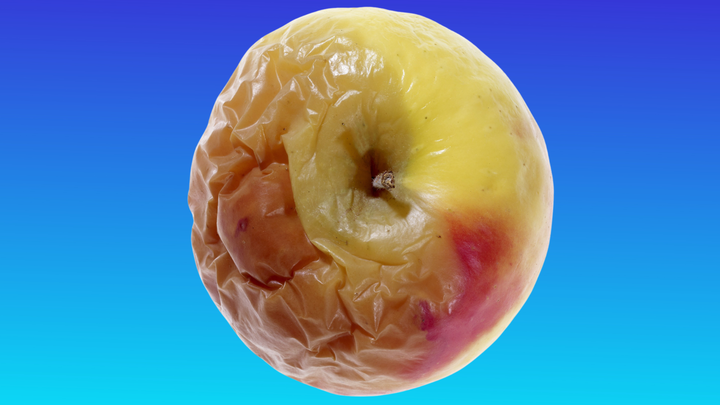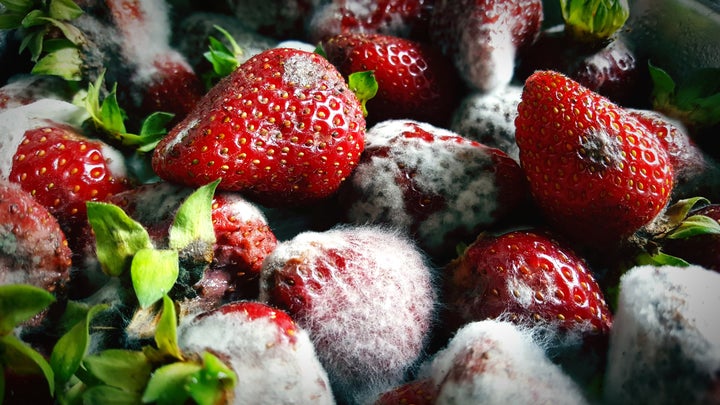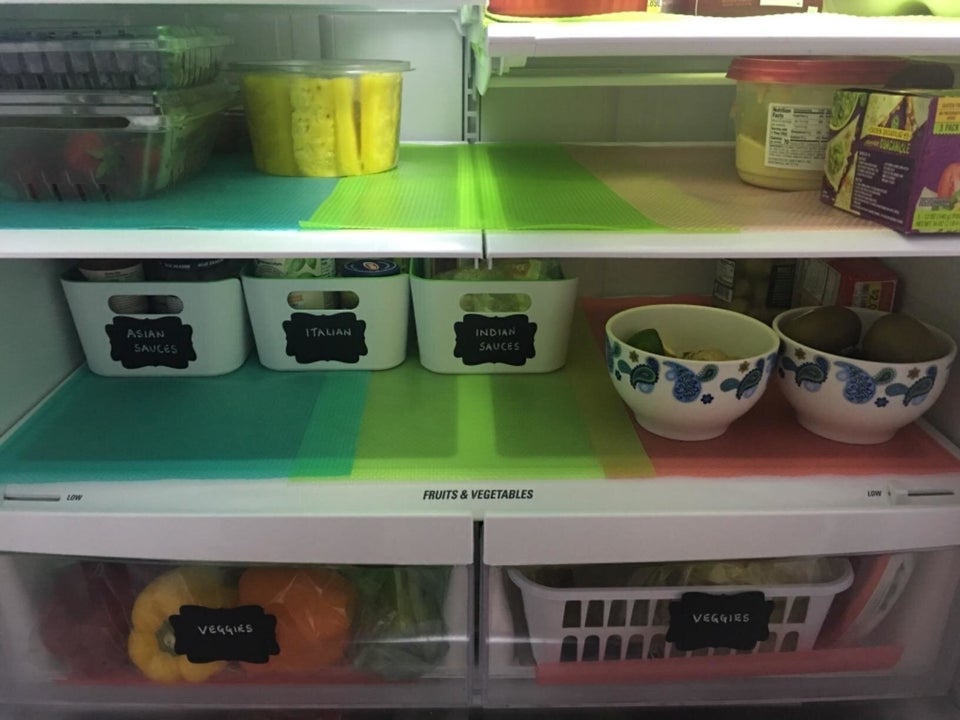
You’ve surely heard the expression about one bad apple spoiling the whole bunch. While it’s a metaphor for someone whose behavior makes a whole group look bad, it might also literally refer to the actual fruits and vegetables in your fridge. When you find one rotten grape in a pack or moldy bell pepper in your crisper drawer, is the produce touching these items still safe to eat? Or should you throw everything away?
“While one rotten apple can spoil the bunch, it takes time to do so,” said Matt Regusci, director of growth and public relations at ASI, a company that provides food safety inspections, certifications and consulting. “There’s no need to dump the whole vegetable drawer because of one rotten piece of fruit or veggie—just throw out the produce touching the rotten item.”
It’s also likely safe to eat produce that has touched a moldy item, as long as you wash it first and eat it quickly, he added. But there are many factors to consider. Here’s what you should know about how spoiled produce can affect nearby items and how to decide whether it’s still OK to eat.
Can rotten or moldy produce contaminate other items?
There are hundreds of thousands of species of molds, which are microscopic fungi that live on plant and animal matter, according to the U.S. Department of Agriculture. Mold commonly spreads by releasing spores into the air, said Vanessa Coffman, director of the Alliance to Stop Foodborne Illness. It can also spread via water or insects.
So, mold can easily migrate from one piece of fruit or vegetable to another that’s touching it, said Tamika Sims, senior director of food technology communications at the International Food Information Council.
“It’s best to first throw away the moldy produce and inspect the produce touching it for mold,” she said. “If you see mold, feel mushy skin or see discoloration, this produce must also be discarded.”
And, “clean out and wipe down your fridge regularly,” especially if you’ve had moldy items, Coffman added.
Some molds are OK to eat, like in blue cheeses, Coffman said. Others can cause severe disease. A few molds can produce mycotoxins, which are toxins that make you sick, but most U.S. consumers aren’t usually exposed to these kinds of molds, she added.
Moldy foods may also have bacterial growth. It’s this bacteria, not the mold itself, that usually causes foodborne illness, Coffman said.
Should you throw away fruits and vegetables that have touched a rotten item?
Food waste is a huge problem in the U.S. The average household wastes 32% of the food it purchases, costing consumers $240 billion a year, according to research published in the American Journal of Agricultural Economics.
So, it’s not always necessary to throw away everything in your crisper or an entire package of strawberries just because you spot one moldy piece of produce, Coffman said.
It can take a few days to a couple of weeks for fruits and vegetables to grow mold in the refrigerator or pantry, according to the Ultimate Mold Guide.

But if you do see a moldy item, inspect neighboring fruits and vegetables for signs of mold (green or white fuzz) or spoilage (mushy texture or discoloration), Sims said.
“Evolution has given humans amazing instincts to tell if food is safe to eat,” using sight, touch and smell, Regusci said. “First, does it look good? No mold or cracks. Does it smell good? Not funky, unless you have purposely fermented or pickled it. Does it feel right? Not super mushy. Then it should taste right.”
Is it safe to eat produce that’s had a moldy neighbor?
Don’t see mold growing on a fruit or vegetable that’s been hanging out with a moldy item? You can usually wash the produce and eat it later. The USDA recommends washing produce under running tap water and avoiding using soap or detergent.
“The likelihood of getting ill from one of the fresh items that have been touching a rotten one in the U.S. is low, especially if you are a person without underlying health conditions,” Coffman said. People with mold allergies or compromised immune systems could be at risk for illness, though.
The USDA mostly recommends throwing away foods that display mold but suggests that some foods can still be eaten if you remove the mold. For example, on firm fruits and vegetables with low moisture content, like cabbage, bell peppers and carrots, you can cut off at least an inch around and below a small mold spot. Just avoid touching the moldy spot with your knife so you don’t cross-contaminate the produce.
However, soft produce with high moisture content, like tomatoes, peaches and cucumbers, should be thrown away if they show mold.
Coffman said mold on the surface can mean the “mold has also rooted deeply below.” If the food is contaminated with a mycotoxin-producing mold, the toxins spread throughout the item.
Never sniff moldy items, as you could inhale the mold spores, which could cause respiratory illness. People can also get sick from skin contact with moldy foods, Coffman said.
Keep in mind, too, that just because the food looks OK or you’ve removed the moldy bits, it could be unsafe to eat. Pathogens, like e.coli, listeria and salmonella, aren’t visible to the naked eye.
“There isn’t much you can do when inspecting produce at the grocery store to tell if it’s harboring something that might make you sick,” Coffman said. “What you can do is wash your produce, cook it when possible and keep an eye out for recalls and public health notices.”
She also suggested keeping raw meats and other foods from cooked foods, washing your hands frequently while cooking and handling food, and placing a kitchen thermometer in the refrigerator to ensure it’s set at or below 40 degrees Fahrenheit to keep molds and bacteria from growing.
“If you do end up accidentally eating something moldy and have an allergic reaction, seek medical help,” Coffman said. “Symptoms can include a sudden onset of shortness of breath, nausea, fever or diarrhea.”
